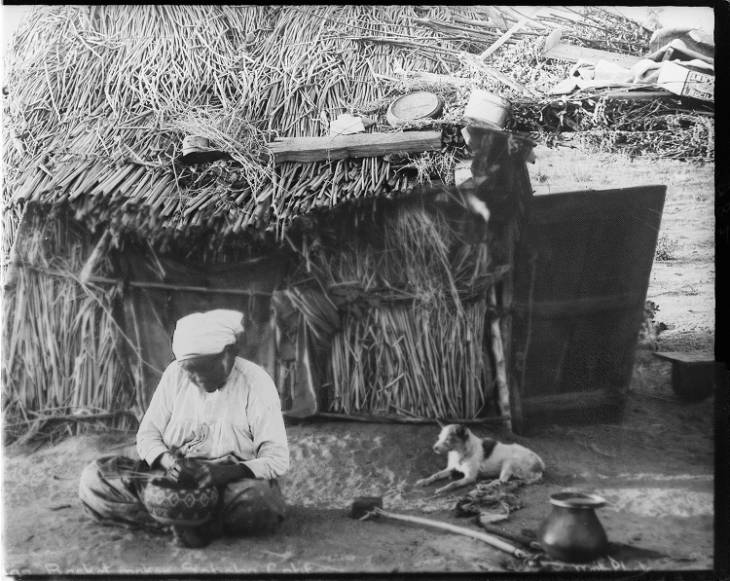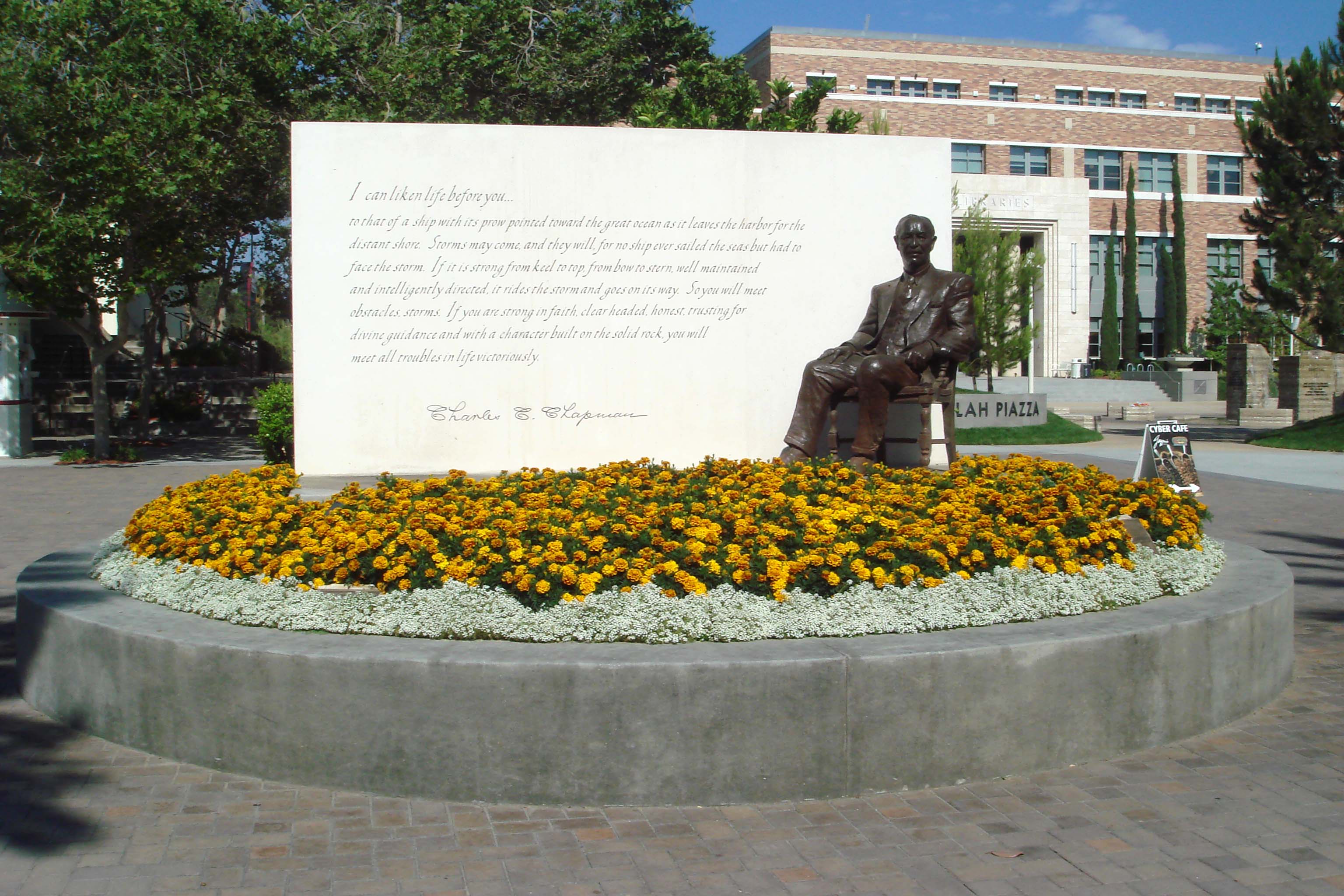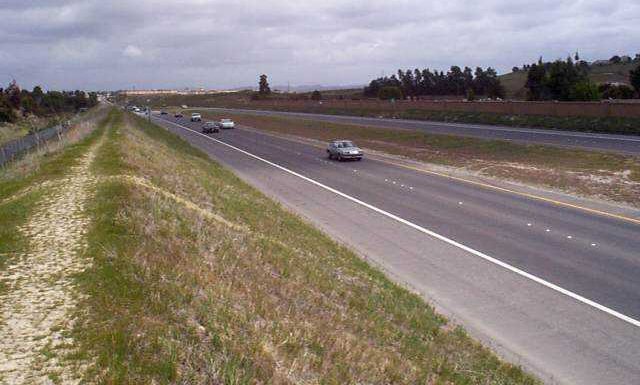|
Pala Band Of Luiseno Mission Indians
The Pala Indian Reservation is located in the middle of San Luis Rey River Valley in northern San Diego County, California, east of the community of Fallbrook, and has been assigned feature ID 272502. Historic variant names used to describe the area include Mission Indian Reservation and Mission Indian Reserve. Its members, the federally recognized tribe of the Pala Band of Mission Indians, are descended from both Cupeño and Luiseño peoples, who have shared territory since 1901. A total of five other federally recognized tribes of Luiseño are located in southern California and is the most populated reservation in San Diego County. The reservation has a land area of 52.163 km² (20.140 sq mi) and reported an official resident population of 1,573 persons in the 2000 census, about 44 percent of whom were of solely Native American heritage. Robert H. Smith is the Tribal Chairman. Politics The Pala Band of Mission Indians is governed by a six-member Executive Committee. ... [...More Info...] [...Related Items...] OR: [Wikipedia] [Google] [Baidu] |
California
California is a U.S. state, state in the Western United States, located along the West Coast of the United States, Pacific Coast. With nearly 39.2million residents across a total area of approximately , it is the List of states and territories of the United States by population, most populous U.S. state and the List of U.S. states and territories by area, 3rd largest by area. It is also the most populated Administrative division, subnational entity in North America and the 34th most populous in the world. The Greater Los Angeles area and the San Francisco Bay Area are the nation's second and fifth most populous Statistical area (United States), urban regions respectively, with the former having more than 18.7million residents and the latter having over 9.6million. Sacramento, California, Sacramento is the state's capital, while Los Angeles is the List of largest California cities by population, most populous city in the state and the List of United States cities by population, ... [...More Info...] [...Related Items...] OR: [Wikipedia] [Google] [Baidu] |
Pala Casino Resort And Spa
Pala Casino Spa and Resort is a hotel casino and spa located in Pala on the Pala Indian Reservation northeast of San Diego, California. It is owned and operated by the Pala Band of Mission Indians, a federally recognized tribe. The casino has 86,000 square-feet of casino floor, 2,250 slot machines, 84 table games, 9 restaurants, an day spa, and 4 entertainment venues. The hotel has 500 rooms and 82 suites. History In March 2000, construction began on the $115 million Pala Casino, which opened in April, 2001. On August 19, 2003, the Pala Casino Spa and Resort opened with 500 rooms, a spa, and a conference center. The project cost around $105 million to complete. Dining There are nine restaurants located within Pala Casino Spa and Resort. See also *List of casinos in California *List of casino hotels This is a list of notable casino hotels. A casino hotel is an establishment consisting of a casino with temporary lodging provided in an on-premises hotel. Casino hotels ... [...More Info...] [...Related Items...] OR: [Wikipedia] [Google] [Baidu] |
California Mission Indians
Mission Indians are the indigenous peoples of California who lived in Southern California and were forcibly relocated from their traditional dwellings, villages, and homelands to live and work at 15 Franciscan missions in Southern California and the ''Asistencias'' and ''Estancias'' established between 1796 and 1823 in the Las Californias Province of the Viceroyalty of New Spain. History Spanish explorers arrived on California's coasts as early as the mid-16th century. In 1769 the first Spanish Franciscan mission was built in San Diego. Local tribes were relocated and conscripted into forced labor on the mission, stretching from San Diego to San Francisco. Disease, starvation, excessive physical labor and torture decimated these tribes.Pritzker, 114 Many were baptized as Roman Catholics by the Franciscan missionaries at the missions. Mission Indians were from many regional Native American tribes; their members were often relocated together in new mixed groups, and the Spanish ... [...More Info...] [...Related Items...] OR: [Wikipedia] [Google] [Baidu] |
Luiseño
The Luiseño or Payómkawichum are an indigenous people of California who, at the time of the first contacts with the Spanish in the 16th century, inhabited the coastal area of southern California, ranging from the present-day southern part of Los Angeles County to the northern part of San Diego County, and inland . In the Luiseño language, the people call themselves ''Payómkawichum'' (also spelled ''Payómkowishum''), meaning "People of the West." After the establishment of Mission San Luis Rey de Francia (The Mission of Saint Louis King of France), "the Payómkawichum began to be called San Luiseños, and later, just Luiseños by Spanish missionaries due to their proximity to this San Luis Rey mission. Today there are six federally recognized tribes of Luiseño bands based in southern California, all with reservations. Another organized band is not federally recognized. History Pre-colonization The Payómkawichum were successful in utilizing a number of natural resour ... [...More Info...] [...Related Items...] OR: [Wikipedia] [Google] [Baidu] |
Chapman University
Chapman University is a private research university in Orange, California. It encompasses ten schools and colleges, including Fowler School of Engineering, Dodge College of Film and Media Arts, Fowler School of Law, and Schmid College of Science and Technology, and is classified among "R2: Doctoral Universities – High research activity". Although it does not claim to be a Christian college, it has had a relationship with the Disciples of Christ since the university's founding and with the United Church of Christ since 2011. History Founded in Woodland, California, as Hesperian College, the school began classes on March 4, 1861. Its opening was timed to coincide with the hour of Abraham Lincoln's first inauguration. Hesperian admitted students regardless of sex or race. In 1920, the assets of Hesperian College were absorbed by California Christian College, which held classes in downtown Los Angeles. In 1934, the school was renamed Chapman College, after the chairman ... [...More Info...] [...Related Items...] OR: [Wikipedia] [Google] [Baidu] |
Roscinda Nolasquez
Roscinda Nolasquez (1892 – February 4, 1987) was a Cupeño, and the last speaker of the Cupeño language of Southern California. She grew up speaking Cupeño and Spanish. It was not until she was forcefully sent to Sherman Indian School, previously Perris Indian School, in her early teens that she learned English. In 1903, the Cupeño people had to relocate to the Pala Indian Reservation where Nolasquez lived much of rest of her life. In the early 1960s, she continued to speak Cupeño with several elderly residents in Pala.Nancy Dorian (ed) (1992)''Investigating Obsolescence: Studies in Language Contraction and Death'' Cambridge University Press. Nolasquez made a serious effort late in her life to help document and preserve the Cupeño language, working among others with linguists Jane Hill Jane Amanda Hill (born 10 June 1969 in Eastbourne, Sussex) is an English newsreader working for the BBC. She is one of the main presenters for BBC News, and is the main presenter on the ' ... [...More Info...] [...Related Items...] OR: [Wikipedia] [Google] [Baidu] |
Rice V
Rice is the seed of the grass species ''Oryza sativa'' (Asian rice) or less commonly ''Oryza glaberrima'' (African rice). The name wild rice is usually used for species of the genera ''Zizania'' and ''Porteresia'', both wild and domesticated, although the term may also be used for primitive or uncultivated varieties of ''Oryza''. As a cereal grain, domesticated rice is the most widely consumed staple food for over half of the world's human population,Abstract, "Rice feeds more than half the world's population." especially in Asia and Africa. It is the agricultural commodity with the third-highest worldwide production, after sugarcane and maize. Since sizable portions of sugarcane and maize crops are used for purposes other than human consumption, rice is the most important food crop with regard to human nutrition and caloric intake, providing more than one-fifth of the calories consumed worldwide by humans. There are many varieties of rice and culinary preferences tend to vary ... [...More Info...] [...Related Items...] OR: [Wikipedia] [Google] [Baidu] |
Mission San Antonio De Pala
The San Antonio de Pala Asistencia, or the "Pala Mission", was founded on June 13, 1816 as an asistencia or "sub-mission" to Mission San Luis Rey de Francia, some twenty miles inland upstream from the latter mission on the San Luis Rey River. Pala Mission was part of the Spanish missions, asistencias, and estancias system in Las Californias—Alta California. Today it is located in the Pala Indian Reservation located in northern San Diego County, with the official name of Mission San Antonio de Pala.Leffingwell, p. 32Carillo, p. 7 It is the only historic mission facility still serving a Mission Indian tribe. Pala (a derivation of the native term ''Pale'', meaning water) was essentially a small ''rancho'' surrounded by large fields and herds. The Pala site had been noted by Father Juan Mariner and Captain Juan Pablo Grijalva on an exploratory trip in 1795, when they went up the San Diego River, and then through Sycamore Canyon to the Santa Maria Valley (or Pamó Valley) and int ... [...More Info...] [...Related Items...] OR: [Wikipedia] [Google] [Baidu] |
California State Route 76
State Route 76 (SR 76) is a state highway long in the U.S. state of California. It is a much used east–west route in the North County region of San Diego County that begins in Oceanside near Interstate 5 (I-5) and continues east. The highway is a major route through the region, passing through the community of Bonsall and providing access to Fallbrook. East of the junction with I-15, SR 76 goes through Pala and Pauma Valley before terminating at SR 79. A route along the corridor has existed since the early 20th century, as has the bridge over the San Luis Rey River near Bonsall. The route was added to the state highway system in 1933, and was officially designated by the California State Legislature as SR 76 in the 1964 state highway renumbering. The section of the highway through Oceanside and Bonsall is mostly a four-lane expressway; east of I-15, the roadway is mostly a two-lane highway. Originally, the entire highway was two lanes wide; west of Bons ... [...More Info...] [...Related Items...] OR: [Wikipedia] [Google] [Baidu] |
Pauma Band Of Luiseno Mission Indians
The Pauma Band of Luiseño Mission Indians of the Pauma and Yuima Reservation is a federally recognized tribe of Luiseño Indians in San Diego County, California. A total of five other federally recognized tribes of Luiseño are located in southern California. Government The Pauma Band is headquartered in Pauma Valley, California. The tribe is governed by a democratically elected four-person council. The current tribal administration is as follows. * Tribal Chairman: Temet A. Aguilar *Vice Chairman: Sophia Salgado *Secretary: Menil Madrigal *Treasurer: Jenna Aguilar Linton Member at Large: Venessa Brown Reservation The Pauma and Yuima Reservation (), also known as the Pauma Indian Reservation, is a federal Indian reservation located in the northeastern corner of San Diego County. The reservation is in size. The Pauma and Yuima Reservation was established in 1872. The main Pauma reservation and tribal headquarters are located in the Pauma Valley below Palomar Mountain. Two s ... [...More Info...] [...Related Items...] OR: [Wikipedia] [Google] [Baidu] |




